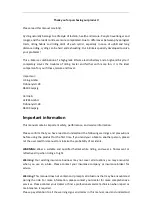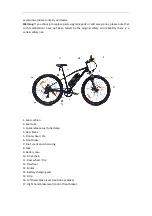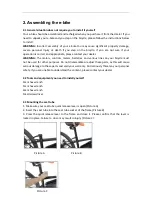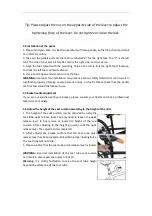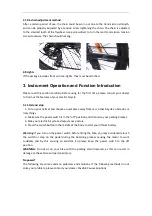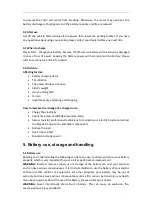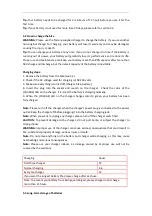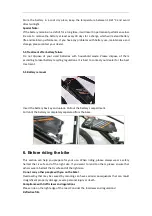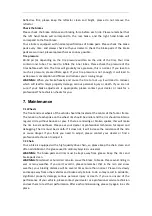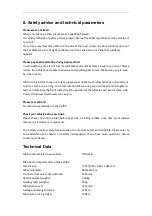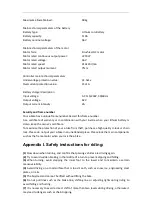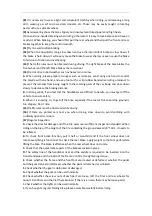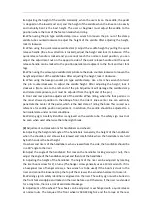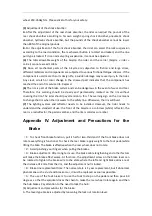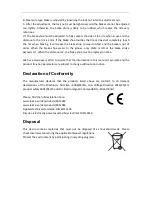
(8)
It is necessary to wear a light and convenient clothing when riding, avoid wearing a long
skirt, wearing a scarf and over-sized trousers, etc. Those may be easily caught in rotating
parts such as a sprocket wheel.
(9)
Avoid wearing shoes that are slippery and inconvenient like slippers and high heels.
(10) Avoid one-handed braking when riding, otherwise it is easy to lose balance and have an
accident. When braking, you should first pull the rear wheel and then pull the front and rear
brakes together to keep the control smooth.
(11)
Try to avoid sudden braking.
(12)
When the downhill is long, slow down and use the intermittent brake to slow down; if
the brake is held down, it will easily cause the brake to wear sharply or even cause the brake
to fail due to friction and overheating.
(13)
The traffic rules must be observed during driving. The right brake of the bike brakes the
front wheel and the left brake brakes the rear wheel.
(14)
Do not drive in bad weather such as heavy rain or snow.
A.
When raining, please prepare rain gear such as raincoats, avoid using one hand to control
the bicycle with one hand, and use a tool such as clip rubber band when riding a raincoat to
prevent the raincoat from being caught in the rotating parts of the car body, and slow down
slowly to decrease the braking distance.
B.
In strong winds, if you feel that the handlebars are difficult to handle, you must get off the
vehicle to ensure safety.
C.
When it is snowing, try to get off the bike, especially if the road is frozen and the ground is
too slippery. Don't ride.
(15)
Traffic rules must be observed while driving.
(16)
If there are parked cars near you when driving, slow down to avoid colliding with
suddenly opened car doors.
(17)
Regular inspection:
A.
Check the tires for damage and if the tire pressure is sufficient. Inspection standard: When
riding on the bike, if the length of the tire contacting the ground exceeds 9~10cm, it needs to
be inflated.
B.
To check front brake function, pull it half or two-third and if the front wheel does not
rotate everything is functional. To check the rear brake: apply weight to the foot pedal while
lifting the bike. The brake is effective when the rear wheel does not rotate.
C.
Check that the quick release parts of the bike are locked in place.
D.
The safety line of the handlebar riser and the saddle is required to be inserted into the
front standpipe and the inside of the frame. Confirm the tightening torque.
E.
Check whether the frame and the front fork are cracked or deformed, whether the pedal
and the gear crank are deformed, whether the paint is detached or wrinkled.
F.
Check whether the gear is deformed or damaged.
G.
Check whether the gear can be used normally.
H.
Check whether the screw nuts of each part are loose. (Lift the front and rear wheels for
about 10 to 20cm and then let them bounce. If there is a noise, there may be loose parts)
I.
Check whether the lights can be used normally.
J.
If you bought a regular folding bike, please assemble carefully before riding.

